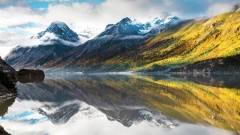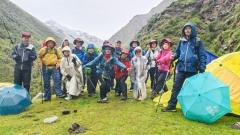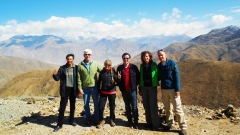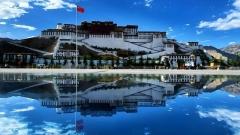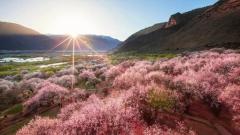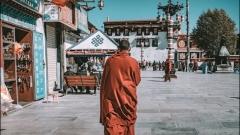Mount Kailash is one of those places that sits at the intersection of geography, faith, myth, and mystery. For many international travelers, the word “Kailash” conjures dazzling high-altitude panoramas, long pilgrimages, and stories that blur the line between the natural world and the sacred. But when the question is put bluntly -“Can you climb Mount Kailash?” – the short answer is: technically no, and practically no.
Why Climbing Kailash Is Different from Other Peaks
Mount Kailash sits in far western Tibet and is visually striking — a pyramid-like peak with four near-symmetrical faces that seem almost engineered rather than eroded. Its summit reaches over 6,600 meters (about 21,700 feet), so altitude alone makes it a demanding objective. More importantly, the mountain is not merely a physical obstacle to overcome: for millions of people, it is a living center of the world and the dwelling of deities. Mount Kailash is sacred to at least four spiritual traditions — Bon, Tibetan Buddhism, Hinduism, and Jainism — and countless generations have treated it as inviolable ground. That unique combination of difficult terrain and intense spiritual protection is the main reason climbing the peak is not permitted.
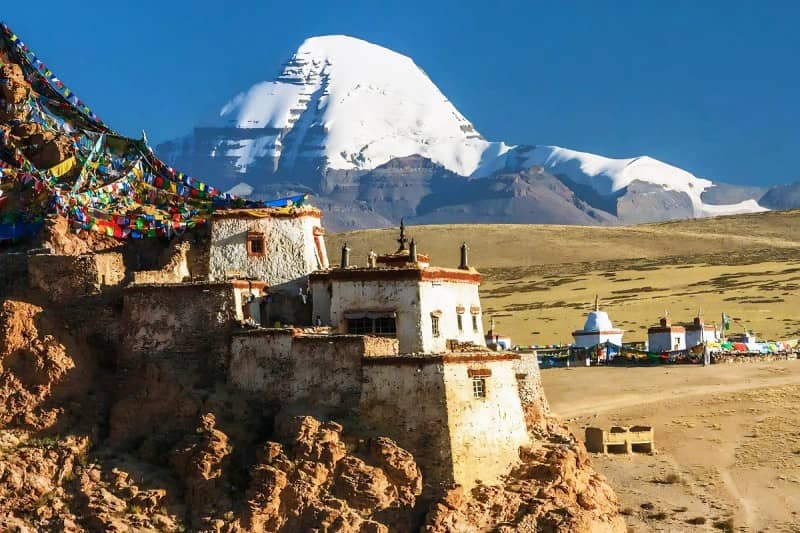
Mount Kailash
Mount Kailash History & Religious Significance
In Buddhism
Buddhist traditions often equate Kailash with Mount Meru, the cosmic mountain at the axis of the universe. It is said to be the home of deities and great tantric masters; stories describe saints who performed miraculous feats on and around the mountain. One famous tale involves the yogi Milarepa, who — according to legend — achieved a spiritual victory on the slopes of Kailash that reaffirmed Buddhism’s prominence in the region. For Tibetan Buddhists, the mountain is a powerful symbol of enlightenment and refuge.
In Bon
Bon is the indigenous spiritual tradition of pre-Buddhist Tibet. For Bonpo followers, Kailash is central to their cosmology and ritual geography. They weave distinct myths and rituals around the mountain, and for Bon pilgrims the area carries ancestral and liturgical weight that predates many later traditions.
In Hinduism and Jainism
Hindu belief places Shiva and his consort Parvati on Kailash — the mountain becomes not just symbolic but literally the god’s abode. Therefore, the area surrounding Kailash and nearby Lake Mansarovar has been a major pilgrimage destination for Hindus for millennia. In Jain narratives, Kailash is also venerated as the place where important spiritual figures reached liberation. These overlapping claims from multiple faiths make Kailash globally unique: it is sacred to billions and central to rites from different religious worlds.
Mount Kailash Legends, Mysteries, and Why Some Expeditions Stopped
Stories about Mount Kailash include accounts that sound like warnings: expeditions turned back after ominous signs, mysterious footprints reported by climbers, and tales of serious misfortune befalling those who ignored warnings. Over the years, pilgrims and some mountaineers have told stories of avalanches, unexplained tracks, and even cases where climbers who attempted to push higher later experienced severe health decline. These accounts have fed the mountain’s aura and strengthened local and religious resolve against summiting. Whether you treat such stories as literal truth or symbolic caution, they are part of why the idea of “climbing Kailash” is treated with such gravity by locals and pilgrims alike. (Note: these are traditional and contemporary narratives passed down and reported in many travel and pilgrimage accounts.)
The Pyramid-Like Peak, Difficult to Climb
Even setting aside religious prohibitions, Mount Kailash is a very hard mountain to climb. From the ground it looks like a geometric monument: steep, near-vertical faces and ridgelines that present serious technical rock and ice challenges. Combined with high winds, frequent storms, and the thin air of the Tibetan plateau, the technical difficulty is steep: routes that might look straightforward from a distance often turn into dangerous, exposed climbs. For mountaineers used to technical Himalayan peaks, Kailash presents a bitter mix of steepness and unpredictable conditions that make any summit attempt risky — even if permission were ever granted.
The Kailash Kora: Pilgrimage Instead of a Summit Push
Because climbing the summit is prohibited and taboo, the principal spiritual practice at Kailash is the kora — a full circumambulation of the mountain. Here’s what international travelers should know:
What Is the Kora?
The kora is the path that wraps around Mount Kailash, a trek of roughly 50–55 kilometers (about 31–34 miles) depending on the exact start and finish points. Pilgrims follow this circuit clockwise or counterclockwise depending on their faith tradition; for many Buddhists and Hindus, walking clockwise is the prescribed route. Completing one kora is believed to erase sins and bring spiritual merit, while multiple koras are said to multiply the karmic benefit. The trek includes rugged high passes, sacred shrines, and dramatic views of the mountain and neighboring lakes.
Typical Route and Terrain
The classic kora usually begins near the north side camps at Darchen and skirts the base, rising to the highest pass — the Dolma La — at around 5,600 meters (approximately 18,370 feet) before descending to the southern plains. Expect rocky trails, scree slopes, occasional snowfields, and high winds. The highest pass is the most physically demanding part of the kora but also one of the most spiritually charged viewpoints. Plan for at least 2–3 days to complete the kora on foot; many organized tours combine walking and short vehicle transfers to accommodate different fitness levels.
Spiritual Practices Along the Kora
Pilgrims often stop to prostrate, recite mantras, spin prayer wheels, and leave offerings. Some devotees perform full-body prostrations across large stretches of the trail — an act that can take many days and is regarded as the ultimate devotional practice. Respectful behavior is essential: photography in some rituals may be unwelcome, and loud or irreverent behavior is inappropriate around shrines and during ceremonies.
Why People Choose the Kora Over a Summit Attempt
For most visitors and pilgrims, the kora offers everything they hope to receive from a summit attempt — awe, challenge, profound stillness, ritual healing, and a physical test of endurance — without violating local norms or provoking spiritual backlash. The kora weaves together natural beauty and spiritual practice: crossing high passes, watching sunrise paint the mountain gold, and joining people from different faiths in a common act of devotion. In that sense, the kora is the fulfillment of what many climbers seek on summits — transformation and perspective — but framed in the mountain’s own terms.
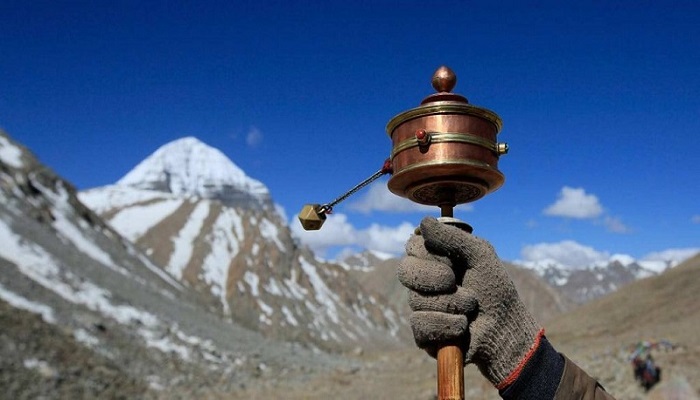
Mt Kailash Yatra
Practical Advice for International Tourists
Best Time to Visit Mount Kailash
The most comfortable months are late spring to early autumn – May through October – when roads are more reliable and passes are least likely to be blocked by heavy snow. Shoulder seasons offer fewer crowds but more volatile weather. Winter travel is extremely difficult and not recommended for casual visitors.
Permits and Legal Requirements of Climbing Mount Kailash
Travel to Mount Kailash normally requires special permits and usually an organized tour. Because Kailash is in the Tibet Autonomous Region, foreign travelers must arrange an itinerary with a licensed agency; independent travel is generally not allowed. This is one of the reasons working with an experienced tour operator is recommended — they will handle permits, guides, vehicle logistics, and liaison with local authorities.
Health and Altitude
Altitude sickness is a major concern. The region around Kailash sits at very high elevations, and the kora reaches a high pass near 5,600 meters. Allow at least two days to acclimatize in Lhasa or nearby lower-altitude stops, drink plenty of water, and consider medication for altitude when appropriate and prescribed by a doctor. Walk slowly on the kora, watch for symptoms like severe headache, nausea, confusion, or shortness of breath, and be prepared to descend if symptoms worsen.
Mount Kailash Transport and Accommodation
Most international visitors fly into Lhasa or travel overland from Chinese cities that provide access to western Tibet. From there, multi-day drives or local flights connect to the Ngari (Ali) region where Kailash sits. Accommodation ranges from basic guesthouses and tented camps near Darchen to simple lodges in the pilgrimage route. Modern tour operators provide sleeping tents, hot meals, and pack animals where needed.
What to Pack When Visiting Mount Kailash
Bring layered clothing for extreme temperature swings, sturdy hiking boots, sun protection (hat, sunglasses, SPF), a reliable sleeping bag rated for cold temperatures, a personal first aid kit, and a reusable water bottle. Spiritual items — beads, small offerings, or a clean scarf (kata) — are often appreciated and accepted at shrines. Don’t forget a headlamp, spare batteries, and comfortable clothing for breaks in camp. Respect local dress codes: modest clothing is appropriate around religious sites.
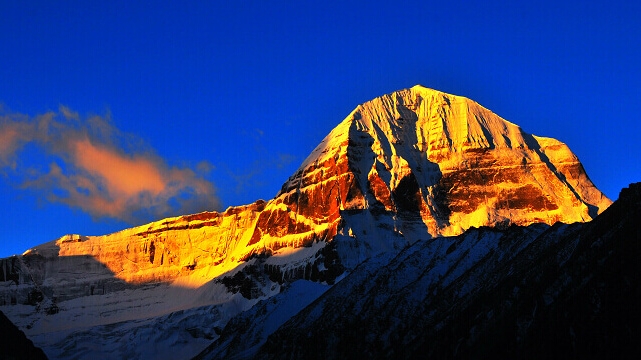
Mount Kailash
Planning Your Kailash Trip: Choose a Reputable Operator – China Dragon Travel
Because of permit requirements, high altitude, and remote logistics, most international travelers find that a guided tour is the only practical way to visit Kailash. A reputable operator handles transport, permits, local guides, meals, and emergency contingencies. They also help ensure your visit is culturally appropriate and safe. If your goal is spiritual — or even simply photographic and experiential — the route handled by experienced guides will let you focus on the experience rather than the paperwork and hazards.
Kailash is not just a natural monument; it is a living spiritual landscape. Approach the mountain with cultural sensitivity: ask before photographing people engaged in devotional practices, accept local norms around modesty and ritual behavior, and don’t attempt to alter sacred spaces. Many pilgrims and villagers in the area depend on tourism for income, so choosing reputable local guides and fair operators supports the community and preserves local traditions. If your motivations are primarily spiritual, remember that showing reverence and following local guides’ instructions are the greatest honors you can offer.
⇒ Recommended group tours and custom tours to Mount Kailash
⇒ 15-Day Mount Kailash Pilgrimage Tour: Ngari, Lake Manasarovar, Lhasa, E.B.C. & More





